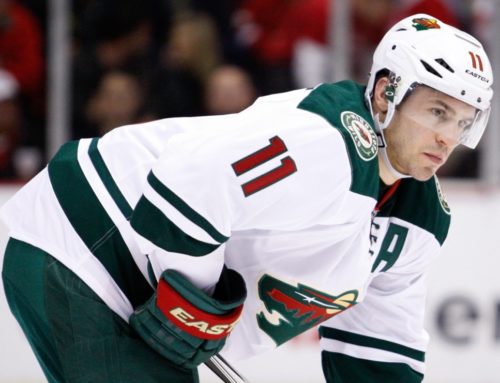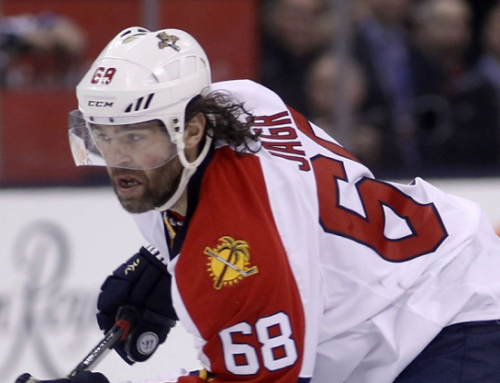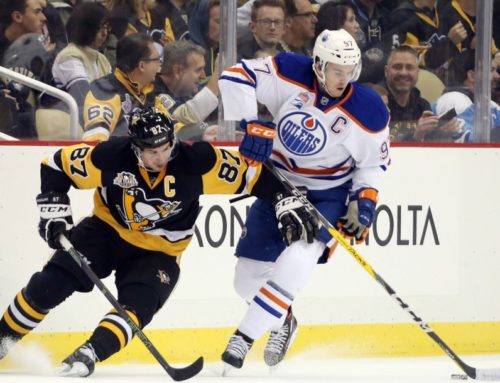
Is there a bias against players from the QMJHL?
Over the last week I was curious to find out more about the Jonathan Drouin situation. It was either during a TV or radio segment (sorry I cannot remember which station) someone said that it really was up in the air if Drouin would turn out to be a great player or be a wasted draft selection.
That person implied that the Quebec Major Junior Hockey League does not provide many quality NHL hockey players, at least not from the top end.
Why is that?
My first step is to look at how many of the top players of the Q have made NHL careers from the last ten years (2005 to 2015). Yes, the last few years will be lean because prospects would not have necessarily made it. I have added them to my results but have them marked with an asterisk (*). Statistics compiled by hockeydb.com.
|
Player |
Points when in the Top 10 in QMJHL Scoring (2005 to 2015) |
|
152 |
|
|
125, 108 |
|
|
116 |
|
|
119, 114 |
|
|
112, 106 |
|
|
101 |
|
|
94, 85 |
|
|
96, 96 |
|
|
105 |
|
|
85 |
|
|
105, 108 |
|
|
99 |
|
|
Anthony Mantha * |
89, 120 |
|
104, 101 |
|
|
99 |
There might be a few more prospects to include, but I think it is safe to say 15 players out of 87 have made substantial NHL careers, once you remove duplicates. That is 17 percent, assuming the six prospects I have flagged do indeed have good careers in the NHL. The result is worse if they don’t.
Is that good? Is it bad in comparison to the other junior leagues? I do not know, but I would have expected the best players to make a better impact.
I wanted to take a look at the ten seasons before this group. Were the results any different?
|
Player |
Points when in the Top 10 in QMJHL Scoring (1996 to 2005) |
|
168, 135 |
|
|
97 |
|
|
114 |
|
|
📢 advertisement:
|
98, 104 |
|
Pierre-Alexandre Parenteau |
103, 118 |
|
101 |
|
|
140 |
|
|
130 |
|
|
121, 113 |
|
|
120 |
|
|
119 |
|
|
186, 131, 115 |
|
|
167, 125 |
|
|
126 |
|
|
120 |
|
|
115 |
|
|
130, 163 |
|
|
117 |
|
|
J.P. Dumont |
108 |
This is a much better collection, having 19 out of 80 players (almost 25 percent) make the NHL in some long-term way. Most of these guys continued to display their offensive prowess.
Sure, the prospects from a few years ago still have the opportunity to play in the NHL, but are they going to be effective? Have they been stifled because job opportunities, especially on scoring lines, are harder to come by?
I am not suggesting that they be handed the jobs without earning it.
I am, however, saying that maybe the second set of players had it a little bit easier because a lot of the old guard were either retiring or relegated to third-line duties. That allowed these guys to step up and step into top line roles.
The players from the first table do not have the same advantage or opportunity because most of the top line players now are still in their prime of their careers.
Think of it this way, the early 1980’s players were the “baby boomers.: They started to retire or slow down and were replaced by the guys drafted between 1996 and 2005. Players coming in after that have a harder time cracking lineups.
If you want an example, take the Sedins: Daniel and Henrik.
Both were drafted in 1999, and they started playing in the NHL the next season. Their minutes were controlled for the first few years, but they were being groomed. By the start of the 2005 season, they were the leaders of the Vancouver Canucks.
There are more examples, but the ones that I could come up with that were just on the edge of that band were Corey Perry and Ryan Getzlaf.
They were both drafted by Anaheim in 2003, but they didn’t start playing in the NHL until 2005. When the 2007 season began they were in charge and have been so ever since.
Back to the original question: Why is there a perception that the QMJHL does not produce NHL calibre players?
Possible Answers
A – There is a natural cycle of player careers, and there are fewer opportunities at the moment for guys like Drouin, no matter which league they come from.
B – They are not as talented as players the before them. They simply are not good enough and the QMJHL does not do enough to prepare and develop the players in their league.
C – There is a bias against the type of hockey they play.
I want to believe that the answer is A. I feel that B is not true at all, but it would be very troubling if C was the real answer.
2 Comments
Leave A Comment
You must be logged in to post a comment.





 DAL
DAL EDM
EDM MIN
MIN BUF
BUF CAR
CAR DET
DET NSH
NSH L.A
L.A

Good read Demetri although I wish you had really come to an actual conclusion to the question instead of leaving it unanswered.
So roughly 80% of QMJHL players flame out after 5 years or so in the NHL.
From my point of view the answer is a combination of a few things.
A- The majority of players simply are not skilled enough to play at the NHL level. Most Q players are offensive dynamos….at the junior level where the rare goalie makes an impact beyond junior. So scoring is much easier. There are also far fewer shut down blueliners that play a legtimate full time stay at home game.
B- There is a bias against the style of hockey they play. Q players are viewed as soft, and rightfully so. Not too many of the players you've listed play with any sort of physical component to their game. Compared to the players in the OHL and the WHL they lack in physicality.
Not to mention the players in the W, and the O, play a style much more similar to the pro style two way, puck possession, complete game than their Q league counter parts.